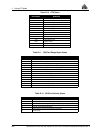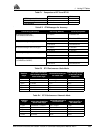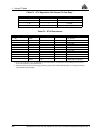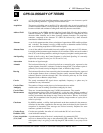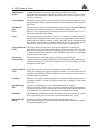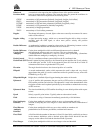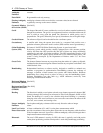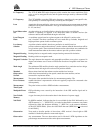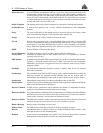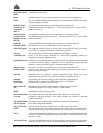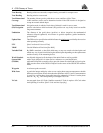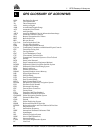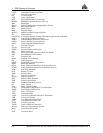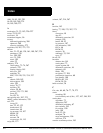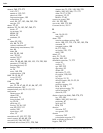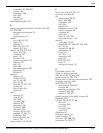
K GPS Glossary of Terms
272 MiLLennium GPSCard SW Version 4.503/4.52 Command Descriptions Manual Rev 2
Observation Set A set of GPSCard measurements taken at a given time which includes one time for all
measurements, and the following for each satellite tracked: PRN number, pseudorange
or carrier phase or both, lock time count, signal strength, and tracking status. Either L1
only or L1 and L2 measurements are included in the set. The observation set is assumed
to contain information indicating how many satellites it contains and which ones have
L1-only and which ones have L1/L2 pairs.
Origin Waypoint The starting point of the present navigation leg, expressed in latitude and longitude.
Parallel Receiver A receiver that monitors four or more satellites simultaneously with independent
channels.
Parity The even or odd quality of the number of ones or zeroes in a binary code. Parity is often
used to determine the integrity of data especially after transmission.
Perigee The point in a body’s orbit at which it is nearest the earth.
P-Code Precise code or protected code. A pseudorandom string of bits that is used by GPS
receivers to determine the range to the transmitting GPS satellite. P-code is replaced by
an encrypted Y-code when Anti-Spoofing is active. Y-code is intended to be available
only to authorized (primarily military) users. [See Anti-Spoofing, C/A Code and Y-Code]
PDOP Position Dilution of Precision [See DOP]
Precise Positioning The GPS positioning, velocity, and time service which is available on a
Service (PPS) continuous, worldwide basis to users authorized by the U.S. Department of Defence
(typically using P-Code).
PRN Number A number assigned by the GPS system designers to a given set of pseudorandom codes.
Typically, a particular satellite will keep its PRN (and hence its code assignment)
indefinitely, or at least for a long period of time. It is commonly used as a way to label a
particular satellite.
Pseudolite An Earth-based transmitter designed to mimic a satellite. May be used to transmit
differential corrections.
Pseudorange The calculated range from the GPS receiver to the satellite determined by taking the
difference between the measured satellite transmit time and the receiver time of
measurement, and multiplying by the speed of light. Contains several sources of error.
Pseudorange Measurements made using one of the pseudorandom codes on the GPS
Measurements signals. They provide an unambiguous measure of the range to the satellite including the
effect of the satellite and user clock biases.
Receiver Channels A GPS receiver specification which indicates the number of independent hardware
signal processing channels included in the receiver design.
Reference Satellite In a double difference implementation, measurements are differenced between different
satellites on one receiver in order to cancel the correlated errors. Usually one satellite is
chosen as the “reference”, and all others are differenced with it.
Reference Station The GPS receiver which is acting as the stationary reference. It has a known position and
transmits messages for the rover receiver to use to calculate its position.
Relative Bearing Bearing relative to heading or to the vessel.
Remote/ Rover The GPS receiver which does not know its position and needs to receive
Receiver measurements from a reference station to calculate differential GPS positions. (The
terms remote and rover are interchangeable.)
Residual In the context of measurement, the residual is the misclosure between the calculated
measurements, using the position solution and actual measurements.



